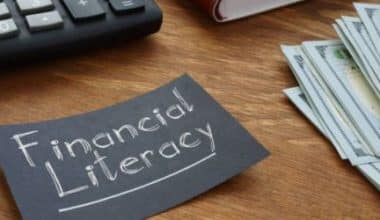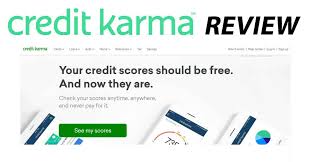A common debt repayment strategy is the debt snowball method.
This method prioritizes paying off your smaller debts before moving on to larger ones. The snowball method focuses on gaining momentum while paying off debt. It could be a good long-term answer for better financial management.
But, before you do, here’s what you should know about the debt snowball method.
What is the Debt Snowball Method?
The debt snowball method is a debt reduction strategy in which you pay off your bills in ascending order, regardless of interest rate.
But, more importantly, the debt snowball is intended to assist you in changing your financial behavior so that you never go into debt again. It offers you control over your debt because as you pay off the first one and move on to the next, you’ll realize that debt isn’t in charge of your money. You certainly are.
How Should the Debt Snowball Method Be Applied?
The debt snowball method is divided into four basic parts.
- Step 1: Make a list of all your debts, except your mortgage. Sort the debts by smallest to highest balance.
- Step 2: Pay the minimum amount on each balance each month, with the exception of the smallest one, which you should put as much money as you can toward. You should go over your budget to see how much money you can pay toward your smallest balance without affecting the rest of your finances.
- Step 3: Once you’ve paid off the smallest balance, roll the additional money you were using to pay off that balance into the monthly payment for the next-smallest balance. Of course, you must continue to make the minimum payments on your other bills.
- Step 4: Continue this approach until you are debt-free.
What Makes the Debt Snowball Method Effective?
Because it is all about changing your behavior, the debt snowball works. To get out of debt, you don’t need a math degree or to have attended business school. Hope is more important in this equation than math.
Winning with money is based on 80% conduct and 20% head knowledge. There’s no stopping you if you can get that person in the mirror to change their habits!
How About the Interest Rate?
If you begin paying on the student loan first because it is the highest debt, you will not be able to eliminate it for a long time. You’ll watch the sum decrease, but you’ll quickly lose interest and stop paying extra. Why? Because it takes an eternity to get a win! And you’ll still have all your other minor, bothersome bills to contend with.
However, if you pay off the smallest debt first, you will notice rapid improvement! That debt is no longer a part of your life. The second debt will arrive soon, followed by the next and the next. Suddenly, instead of little incremental minimum payments, you’re putting hundreds of dollars toward your bills each month. You’ll be more likely to remain with your snowball if you see it genuinely working. You’ll be yelling “I’m debt-free!” before you realize it.
An Example of the Debt Snowball Method
Working through a real-life example is the simplest way to understand this method. Assume you have four different types of debts:
- Payment for a $500 medical bill is $50.
- Credit card debt of $2,500—$63 payment
- $135 payment on a $7,000 auto loan
- $96 payment on a $10,000 student loan
You use the debt snowball method to make minimum payments on all but the $500 medical expense. And because you’re so focused on your goal, you decide to obtain a second job that pays $500 extra each month and add it to your snowball.
Because you’re paying $550 each month on the medical bill (the $50 minimum payment plus the extra $500), you’ll be debt-free in one month. You can now use the $550 you saved to target your credit card debt, paying a total of $613 ($550 plus the $63 minimum payment). In roughly four months, you’ll be happily waving goodbye to that credit card.
Then you’ll smack that vehicle loan in the face for $748 per month ($613 plus $135). You’ll be driving off into the sunset in a vehicle you own in 10 months.
You can put $844 every month toward that dreadful school loan (your largest debt) by the time you reach it. That implies you’ll be sending your final payment to Sallie Mae in 12 months.
With your hard work and sacrifice, additional money thrown into the snowball, and staying focused on the goal, you’ll have paid off $20,000 in debt in just 27 months using the debt snowball method. Isn’t it incredible?
Advantages of the Debt Snowball Method
The psychological lift is the key benefit of the snowball method.
When you watch debts disappear, it might boost your incentive to keep paying them off. Even if you’ve simply paid off a tiny sum, your confidence in your progress improves.
This strategy may also help you get control of your finances — and your stress. The snowball method minimizes concern about how to deal with all of your debt at once by allowing you to focus on one debt balance at a time.
Disadvantages of the Debt Snowball Method
The most significant disadvantage of the snowball method is the possibility of paying more interest over time than if you employed another debt-repayment method. Because the debt snowball method prioritizes the smallest debt balances rather than the debt with the greatest interest rate, your most expensive debt may be paid off last.
If you’re concerned about squandering money on interest, make a list of your credit card and loan APRs. If you discover that the snowball method is costing you too much money in the long term, this strategy may not be the greatest fit for your debt-repayment requirements. Consider the avalanche method, which prioritizes paying off your highest-interest bills first.
How To Increase Your Debt Snowball
When it comes to going the distance, wouldn’t it be good if the finish line was closer? It is feasible! How?
Here are two strategies to accelerate your debt snowball:
#1. Make a budget.
A budget is just a financial plan—if you want to spend more of your money to pay off debt, you’ll need to budget to make it happen!
#2. Begin a side business
Pick up a side job to bring in extra cash for your debt snowball.
Things should be sold. You’re well aware that you’re sitting on items you no longer require. It should be sold. Use the money to accelerate your debt snowball.
#3. Reduce your spending
If you spend less money on costs each month, you’ll be able to put more money toward your debt snowball.
#4. Use a debt snowball calculator to see how much debt you have.
Using our Debt Snowball Calculator is both practical and motivating. You’ll see that every additional dollar you spend toward your debt brings your debt-free date closer!
What Should You Include In Your Debt Snowball?
You’re thinking like a money expert now. Your debt snowball should contain any nonmortgage debt—that is, whatever you owe to anyone else. (While your mortgage is technical debt, it is not included in the debt snowball.)
Nonmortgage debt examples include:
- Payday advances
- Student loans
- Medical expenses
- Auto loans
- Balances on credit cards
- Home equity loans
- Personal loans
And, by the way, “good” debt does not exist. Take, for example, student loans. Many individuals perceive student loans to be worthwhile debt, but the truth is that they are detrimental to your finances in the long run.
The average student loan debt is about $39,000 per borrower.1 In addition, the total amount of outstanding student loan debt is $1.58 trillion.2 Student loans are a significant impediment to young adults’ financial success.
Consider this. Student debt repayment can significantly impede an individual’s ability to purchase a home, save money, and invest for the future. Bottom line: No debt is better than bad debt.
When Should I Begin the Debt Snowball?
Once you’ve saved your $1,000 initial emergency fund, you’re ready to start your debt snowball. That is known as Baby Step 1. An emergency fund is used to handle unexpected life situations. Consider a broken hot water heater, a dental emergency, or a flat tire. You get the idea. An emergency fund keeps you from going further into debt to pay for unforeseen expenses.
So, with that in mind, you’ll begin your debt snowball with Baby Step 2. That indicates you’ve finished Baby Step 1 and are up to date on all of your expenses.
How Should I Begin My Debt Snowball?
It is simple to organize your debt snowball. Begin by listing all of your nonmortgage debt in ascending order. (If you’re married, you should work on this jointly.) Follow the rules we just discussed and start with the least debt. Move on to the next smallest, and then the next, and so on until you’re debt-free.
Is a Debt Snowball a Good Idea for You?
The avalanche method may result in larger interest savings, but know yourself: A strategy that you abandon is a failure, even if it is objectively superior. As a result, even if it costs more in the long run, a less efficient debt snowball may be a desirable option for many people.
According to a 2012 Northwestern University research of nearly 6,000 debt settlement customers, the percentage of debt accounts paid off was a greater predictor of ultimate success than the monetary amount. Subgoals can help you stay to your overall plan. If a debt snowball provides the kind of reinforcement you need to stay motivated, it’s worth paying the extra to get your finances in order.
Is It Better to Have a Debt Snowball or a Debt Avalanche?
Whether a debt snowball or a debt avalanche is preferable depends on whether we’re talking about money or psychology. A debt avalanche is preferable in terms of saving money. Because it requires you to pay off debts depending on their interest rates—the most expensive ones first—you end up paying less in interest. Some people find that paying off lesser bills initially, regardless of interest rate, makes it much simpler to stay motivated. It all depends on what drives you.
Should I Prioritize Paying Off Large or Little Debts?
If you should pay off big debt first or minor debt first is determined by your psychological makeup, such as if paying off modest debts will motivate you to stay on a repayment plan. However, paying off large amounts of debt is more cost-effective in the long run. The greater your outstanding balance, the more interest you will have to pay. So, by paying off the large debt, you will save money on interest and free up funds for other expenditures and objectives.
Is It Better to Save Money or Pay Off Debt?
Paying off debt offers benefits, especially if you’re paying a high-interest rate on it, which is where a lot of our minimum payments go. Paying off debt will enhance your credit score, making it easier to finance large-ticket items in the future, and it will free up funds for other purposes, such as savings or investments.
As a general rule, it makes sense to invest if you can earn more interest on your money by investing than your obligations are costing you. But it doesn’t have to be either/or; you can attempt a little bit of both at the same time.
Other Methods of Debt Reduction
The debt snowball method is one method for paying off debt, however, it is not the only method. There are other solutions available.
#1. Debt Consolidation
If you have a variety of debts, you may want to consider debt consolidation. When you consolidate various bills and make a single payment toward your loan or line of credit, this is referred to as debt consolidation. This can help you simplify your debt by offering you one due date and payment rather than numerous.
This may be an excellent alternative if you can receive a lower interest rate than you are currently paying. Otherwise, it may not be worthwhile to consolidate. Instead, you might want to look into other cost-cutting strategies.
#2. Balance transfer on a credit card
Carrying a balance on your credit cards might result in significant interest costs. If you wish to avoid excessive interest costs in this circumstance, you should consider a balance transfer. This enables you to transfer outstanding debt from one or more accounts to a new or different credit card. It can help you consolidate debt or obtain a reduced interest rate, allowing you to pay off your debt faster.
Just make sure you read over all of the terms and conditions before applying. Especially since a balance transfer may be subject to costs. You should also look into what interest rate you might be charged once the introductory rate expires. Also, keep in mind how deleting outdated credit cards may damage your credit score.
#3. Speak with your lender or a credit counselor.
Those who are having difficulty paying bills on time or repaying outstanding debts can contact their lender to find out what options are available. A credit counseling service may also be of assistance. A professional counselor may be able to offer everything from customized budgeting to general education programs. Some counselors may even be able to develop debt management strategies to assist people in repaying their debts.
Conclusion
If you want to pay off your smaller bills initially, the snowball method can be an excellent place to start. But until you find one that works for you, examine other debt pay-off options.
Just keep in mind that there are numerous strategies to pay off debt. Consider your own financial position as well as the many forms of debt you have to assist you decide which option to pursue.
- HOW TO PAY OFF DEBT FAST: The Complete Guide
- Student Finance: A Complete How-to-Apply Guide
- HOW TO PAY OFF CREDIT CARD DEBT 2023 (Updated)
- What is Debt Management Plan: Definition, Examples, Problems & Strategies
- Important Things to Know Before Refinancing Credit Card Debts (Refinansiering Av Kredittkort)






